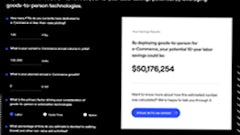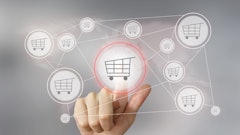
To navigate this uncertain time, organizations need more precise data in all aspects of their business. Nearly 70% of global transactions are supported by channels—wholesalers, retailers, distributors and e-commerce—an ecosystem that’s become far too complex to manage manually, especially in a fast-changing economic climate. If you haven’t automated your channel by now, you’re leaving money on the table—a lot of it.
According to Forrester analyst Jay McBain, “The future of channel partner programs and ecosystems will be anchored on automation, flexibility, scalability and self-service.”
Estimated at a $238 million market by Forrester, the channel finance, pricing and inventory category includes technology solutions that help organizations manage indirect sales revenue and costs. Through automation, you can better engage, service and extract value from your channels to stop revenue leakage.
Channels are changing
As channels change, you need to learn how to engage with them, or you’ll miss the market. To be successful, channels must offer a benefit to the end customer, or those customers will defect to another channel or your competitors. Many channels are establishing their position by becoming specialists, nurturing relationships with their customers and offering extra value to them.
Additionally, as Millennials continue to make up a more significant portion of the workforce, you must acknowledge that a new generation of channel managers will have different expectations from the partnership. Margins that were acceptable in the past are not that appealing to the Millennials running channels today—they want to operate on much higher margins and make better money.
Sometimes, the resale of your product is a nice add-on to a channel’s core business. And sometimes, it’s the baseline, but the channel makes money on additional services like integration. The companies that pay attention to these channels, understanding what partners want from them, are the ones that are engaging them more, and that translates into market share and win rates.
Automation can help you understand your channel partners better. Manual data entry yields incomplete or untimely information, making it difficult to capitalize on opportunities. A unified view of channel data that can be enriched with additional details and shared regularly creates better alignment between marketing, channels and customers.
Pricing complexity is increasing
The Model N 2020 State of Revenue Report finds that almost three quarters (73%) of the more than 300 C-level executives responsible for revenue management in semiconductor/ECM, high tech manufacturing, pharmaceutical, and medical technology companies surveyed expressed frustration about leaving money on the table with their pricing decisions. In addition, 81% of respondents put the potential impact of revenue issues for their industry in the billions of dollars.
Why is pricing still difficult? Everybody wants the transparency and simplicity of standardized pricing, but that’s not just up to the manufacturer, supplier or channel to decide—the end customer really dictates what’s going to happen.
For example, in the technology industry, there’s a multitude of business entities purchasing technology products, and they all want a better price. With different market segments, volumes, geographic regions, and channels, as well as customer-specific negotiated prices, the same product may have different price points in different circumstances.
About half of all transactions in business-to-business high tech are a special price request, and with a high volume of special deal negotiations, it’s difficult to be responsive.
There’s a direct correlation between quote cycle time and win rates. The company with the fastest bid will book the business, especially for commoditized products. While manual cycles can take days to process, automation can bring quote turnaround time down to a few hours, even minutes, even with special prices.
Automation allows the channel to self-serve on quotes and pricing using sophisticated pricing rules that can resolve many different business scenarios—returning the correct price without involving a human. If channel partners can get a price immediately after making a request, that experience has a massive impact on their perception of how easy it is to do business with you. This is not a futuristic statement, as many of Model N’s customers have enabled their channels to self-serve on quotes and prices, accelerating deal cycles and improving win rates while achieving better consistency on their discounts and net prices.
Small errors are costing big money
The State of Revenue Report identifies revenue leakage as an issue that impacts most (95%) companies. Problems range from incorrect data entry (47%) to giving higher discounts than needed to close deals (42%), late payments because of unclear terms (37%), unsent invoices (37%), rebate over-payments (35%), underbilling (32%) and duplicate rebates or discounts (31%).
The channel network has grown so complicated that mining spreadsheets or databases of sales information coming in from multiple entities is labor-intensive, prone to error and a lagging indicator on the health of that business. Traditional approaches for tracking channel sales are so nebulous that sales representatives are spending their valuable time double-checking the numbers to ensure their commissions are being paid out correctly.
Take rebates, for example. On the low end, the over-payments are in the seven figures and sometimes much worse. With automation, you can map inventory and point-of-sale information to the rebate programs to accurately determine return on investment (ROI). When the results of rebate programs are calculated automatically, the finance team can spend less time crunching the numbers and more time evaluating the business value of each program. This intelligence enables effective conversations with channel managers about the performance of rebate programs.
Using automation, you’re now capable of designing programs that are very targeted and closely tied to revenue goals such as pursuing a certain subset of customers with the potential for better margins. You can also design rebate programs that drive desired purchasing behaviors, transforming them from a confusing money pit into an effective sales tool. Finally, it is easier to scale to support multiple rebate programs with a more accurate view of the results.
Stop revenue leakage
In tough economic conditions, every penny counts. Now is the time to deploy automation to help more accurately and efficiently manage and measure your channel strategy. With more precise data and an improved process that supports quick responses to channel needs, your business will be well-positioned to weather unexpected disruptions.


























